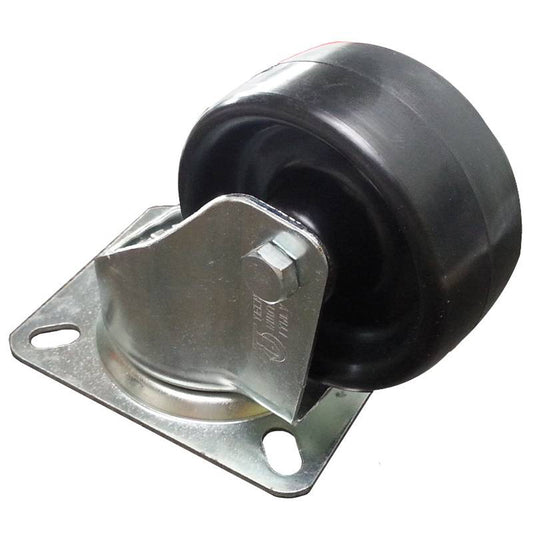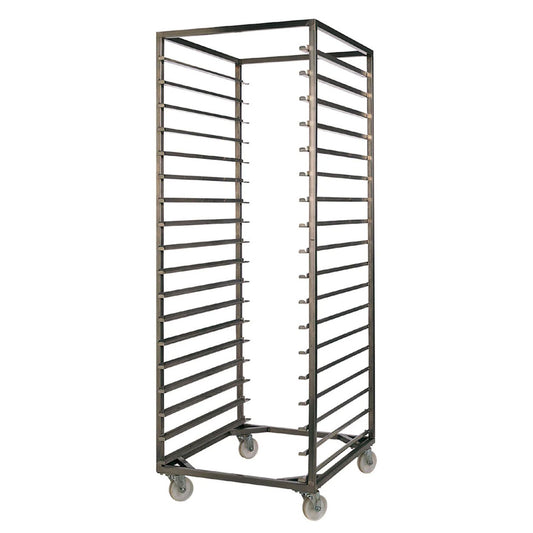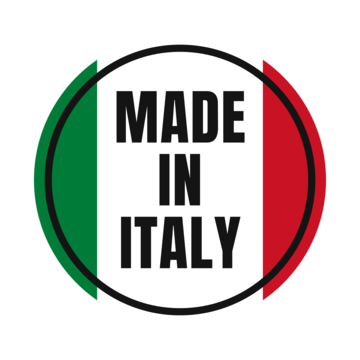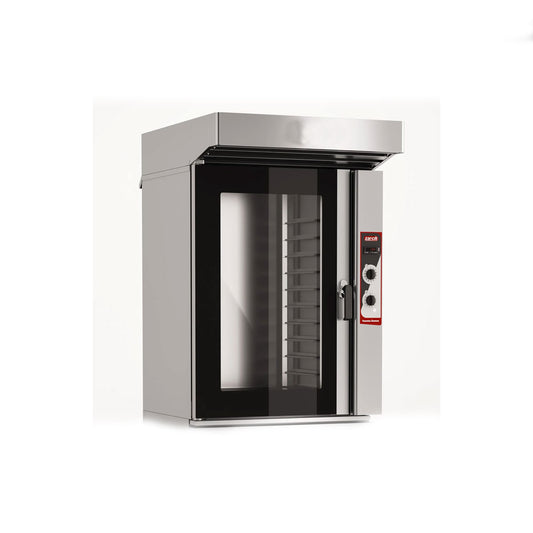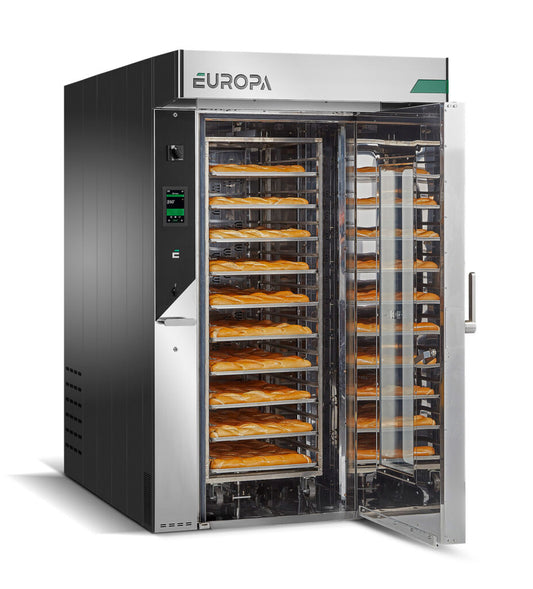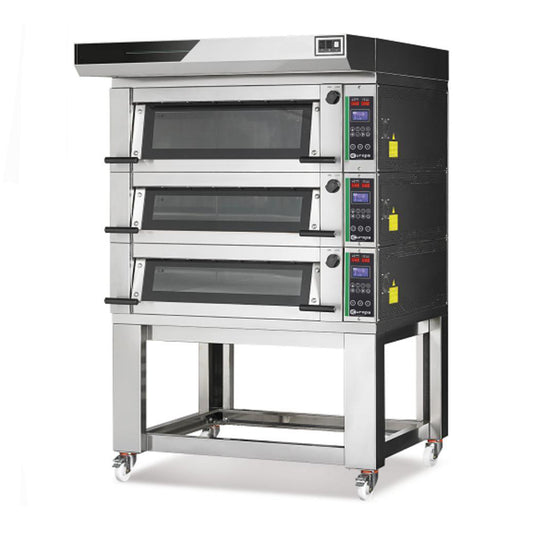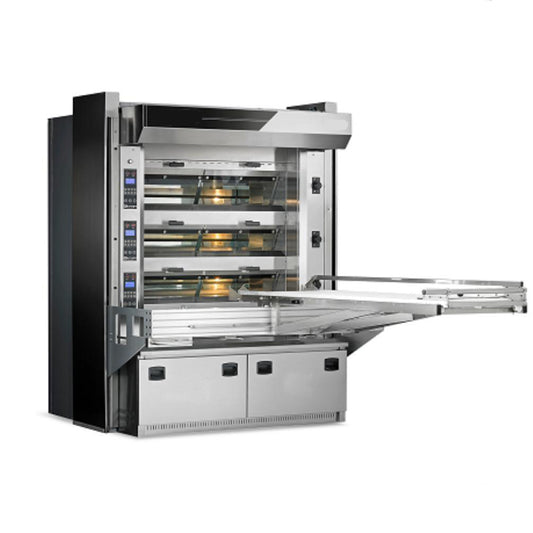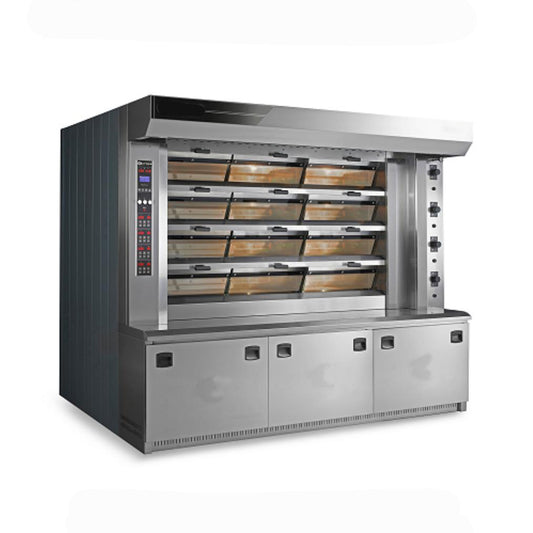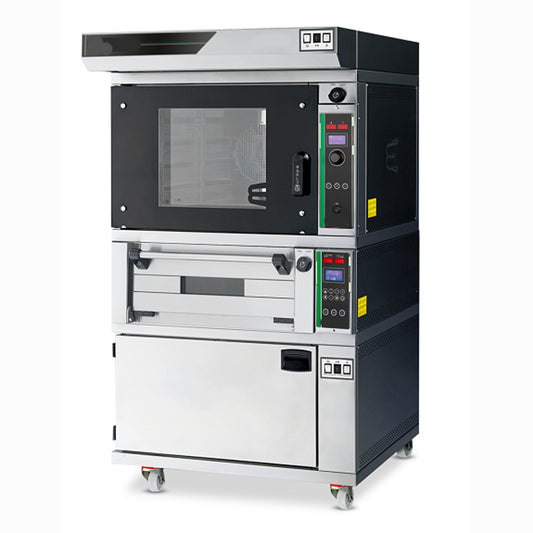Commercial bakery ovens: Italian quality for your bakery
If you are looking for a professional bakery oven, in this section you will find only models selected from the most reliable brands in the sector: ovens designed to ensure even baking, energy efficiency, and durability over time, made to support every baker (from small artisanal workshops to large-scale production) with safe and high-performing solutions.
Features of our electric bakery ovens
When selecting Bakeit professional ovens, we identified a series of essential standards. These are the advantages every baker expects from a reliable tool—and all our models deliver them:
- Energy efficiency: next-generation technologies and insulation systems reduce consumption without compromising performance, ensuring real savings in daily management costs.
- Even baking: heat is distributed consistently, ensuring evenly baked bread and baked goods from the first to the last tray.
- Build quality: sturdy materials such as stainless steel and components designed to withstand time ensure reliability even during intensive work cycles.
- Precise control: intuitive digital panels, programmable settings, and independent management of temperature and steam allow you to adapt baking to every recipe and preparation.
Alongside these shared advantages, each oven then offers specific features designed to meet different production needs. The Bakeit selection has been designed to fully cover the main needs of the sector, guaranteeing the most suitable solution for every professional environment.Why choose an Italian bakery oven?
Main differences between Bakeit bread oven models
To help you make a more informed choice, we have collected in a comparative table the main differences between Bakeit models:
| Model | Functioning | Power supply | Capacity |
|---|---|---|---|
| Convection oven | Convection: heat is distributed by fans that ensure even circulation. | Electric | 6 or 10 trays 40×60 |
| Rotary oven | Rotary: the rack rotates inside the chamber, receiving constant heat on all sides. Ensures uniformity even with large volumes. | Electric, Gas, Diesel | 18 trays with different sizes, from 40×60 up to 80×120 |
| Modular oven | Modular: each chamber works independently, with stone decks and separate temperature and steam control. | Electric | 2/3/4/6 trays |
| Deck oven with fixed hearth | Fixed hearth: the direct heat from the resistances above and below ensures intense and precise baking. Allows you to switch on only the necessary chambers. | Electric | Minimum 18 trays 40×60, up to 90 trays |
| Deck oven with steam tube exchangers | Steam tubes: all chambers heat up together with diffused and constant heat, more enveloping and uniform. | Gas or Diesel | Minimum 18 trays 40×60, up to 110 trays |
| Combi oven | Combined: integrates multiple technologies (convection, modular, and proofing chamber) in a single tool. | Electric | Minimum 7 trays, maximum 12 trays |
Frequently Asked Questions about Professional Bread Ovens
To help you choose the oven best suited to your bakery, we have collected answers to the most common questions about costs, consumption, installation requirements, and technical features.
What is the best professional bread oven?
The best oven depends on the specific needs of your workshop: there is no single model, but the right choice varies according to space, production volume, and the type of baking required.
- For small and medium productions, the Zanolli Ànemos Electric Convection Oven ensures versatility, even baking, and energy efficiency in a compact footprint.
- For medium to large productions with limited space, the Rotor Classic Oven is a compact but highly efficient solution: thanks to its rotating rack and ventilation systems, it ensures consistent baking across all trays.
- For those seeking modularity and growth over time, we recommend the Modular Electric Oven: it allows stacking up to 5 chambers, offering over 50 baking combinations.
- For continuous production and low consumption, the Electric Deck Oven with Fixed Hearth guarantees less than 1.8 kW/m² thanks to optimized insulation and durable components.
- For large-scale artisanal and industrial production, choose the Deck Oven with Steam Tube Heat Exchangers: it ensures gentle and even baking with 30% energy savings compared to masonry ovens.
- For maximum versatility in one tool, the best choice is the Professional Electric Combi Oven. This solution integrates convection, modular, and proofing chamber functions in a single multifunctional baking center.
To complement your oven, also explore our bakery equipment, designed to optimize every stage of production.
How much does a bakery oven cost?
The price of a bakery oven varies depending on size and production capacity.
- Compact models, such as convection or modular ovens, range from about €3,000 to €15,000.
- Larger ovens, such as rotary, steam tube, or fixed hearth deck ovens, cost between €15,000 and €75,000.
- Industrial solutions can exceed €300,000, reaching up to €500,000 for large-scale systems.
How much energy does a professional bread oven consume?
Consumption depends on the type of oven chosen:
- Convection ovens consume on average 5 to 7 kW/h.
- Rotary electric ovens vary from about 17 to 45 kW/h.
- Modular ovens depend on the number of installed chambers.
- Deck ovens vary from about 7 kW/h to around 40 kW/h.
Can I install electric or gas/diesel ovens in any environment?
Electric ovens offer greater installation flexibility, as they do not produce combustion fumes and are therefore easier to place in different environments, provided basic safety regulations are met.
Gas or diesel ovens, on the other hand, are considered actual thermal power plants: they therefore require specific authorizations and stricter constraints on the environment where they are installed.
Do I need to install a chimney for a bakery oven?
Yes.
- For electric ovens, a vent for vapors and baking odors is sufficient, connected to the outside or to an extraction system.
- For gas or diesel ovens, two separate chimneys are required: one for combustion fumes and one for baking vapors. In general, the combustion flue must extend at least one meter above the roof ridge, but specifications may vary depending on local regulations.

